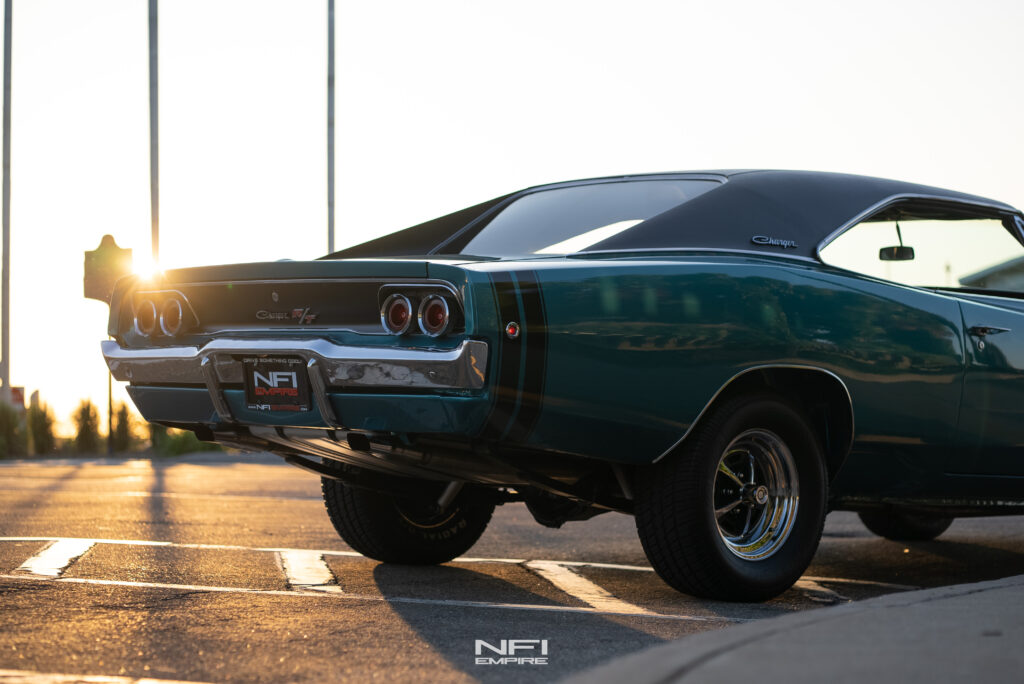

an account. You can:
Access your saved cars on any device.
Receive Price Alert emails when price changes,
new offers become available or a vehicle is sold.



The 1968 Dodge Charger, a titan of American muscle car history, sits on a pedestal in the pantheon of classic vehicles. Representing the perfect blend of power, style, and raw, unadulterated American muscle, the Charger has earned its status as a symbol of automotive innovation and a testament to the golden age of Detroit’s automotive industry. This article delves into the captivating journey of the 1968 Dodge Charger, exploring its rise in popularity, its distinctive features, and the lasting impact it has had on the automotive world.
The Birth of the 1968 Dodge Charger
In the late 1960s, amidst a blooming muscle car era, Dodge introduced an automobile that would forever change the face of American automotive history: the 1968 Dodge Charger. The Charger was an evolution of the Dodge Coronet, designed to compete in the burgeoning market of mid-sized fastback vehicles. The Charger’s debut marked Dodge’s first foray into the high-speed street racing arena, boasting a distinctive fastback body style and full-width taillights that set it apart from its competitors.
The Charger’s Evolution
However, despite its promising inception, the Charger’s sales fell short in the initial years. The fastback craze was waning, and Dodge realized the need to completely reinvent its muscle car for 1968. The Charger was thus redesigned with a bolder, more aggressive look, borrowing heavily from the design cues of the 1966-1967 General Motors A-Bodies, which had proved immensely popular.
The 1968 Charger’s design was a masterstroke in automotive innovation. Its double-diamond coke bottle profile, inspired by the 1966-1967 GM A-Bodies, was a game-changer, giving the car a muscular and futuristic twist. The Charger’s unique design elements, such as the recessed grille with hidden headlights and the tunnel-back roof, were innovative and ultimately contributed to its immense success.
The Charger’s Unprecedented Success
The 1968 Charger was a resounding success, with sales skyrocketing from a meager 16k in 1967 to a staggering 93k in 1968. The Charger’s unique design, combined with its impressive performance capabilities, solidified its place within the ranks of automobile celebrity.
A Wide Range of Options
One of the key factors contributing to the 1968 Dodge Charger’s popularity was its extensive range of engine options. The base model came with a standard 5.2-liter, 318 cubic-inch V-8 engine, producing 230 horsepower. However, Dodge also offered a range of optional engines, including the 361 cubic-inch V-8 engine, producing 265 horsepower, and the 6.2-liter, 383 cubic-inch V-8 engine, producing 325 horsepower.
But the real game-changer was the 426 cubic-inch Street HEMI® engine, providing a whopping 425 horsepower and 490 lb.-ft. of torque. This was the engine that forever defined the Charger, cementing its reputation as a high-performance muscle car.
The Charger’s Impact on NASCAR
The Charger’s design wasn’t just for show. Dodge took the Charger into NASCAR, hoping that its fastback design would give it an edge on the high-speed tracks. However, the car was initially plagued by issues with rear-end lift around corners, making it difficult to handle on faster tracks.
To address these issues, Dodge installed a small lip spoiler on the trunk lid, which significantly improved traction at speeds above 150 mph. This made the 1968 Charger the first US production vehicle to feature a spoiler, a testament to Dodge’s commitment to innovation.
The Charger’s Ongoing Legacy
The 1968 Dodge Charger’s impact was not confined to its era. Its influence can still be seen in the automotive world today. The Charger’s double diamond-shaped design, the “electric shaver” grille, the full-length console, and the hidden headlights have all become iconic features, defining the Charger’s identity and setting a precedent for future muscle car designs.
The Charger’s design also had a significant influence on subsequent generations of muscle cars. Dodge continued to evolve the Charger’s design over the years, introducing new models like the Charger R/T, characterized by its high-performance features, and the Charger SE, which offered a more luxurious driving experience.
The 1968 Dodge Charger Restomod
Fast forward to the present day, and the 1968 Dodge Charger continues to captivate car enthusiasts worldwide. However, it’s not just the classic models that are turning heads. The 1968 Dodge Charger equipped with a modern Hellcat powerplant is a modern-day marvel. Classic look with new technology, this combination is the most searched Charger resto-mod.
The Charger Restomod combines the timeless appeal of the 1968 Charger with modern technology and performance enhancements. Its updated specifications include a powerful engine, improved handling, and advanced safety features. Because we couldn’t dream of a supercharged 6.2L V8 in ‘68, it’s important to outfit the car to handle all that power safely. Despite these updates, the Charger Restomod retains the classic aesthetic of the original 1968 model, offering car enthusiasts the best of both worlds.
Conclusion
The 1968 Dodge Charger represents a pivotal moment in automotive history, marking a turning point in the evolution of the American muscle car. From its bold design to its high-performance capabilities, the Charger captured the spirit of its era and continues to captivate car enthusiasts to this day.
Whether it’s the classic 1968 model, the modernized Charger Restomod, or the high-performance Charger Hellcat, the Dodge Charger remains a symbol of American automotive excellence. It’s a testament to Dodge’s dedication to innovation, performance, and style, and a shining example of why we all love to ‘Drive Something Cool.’
